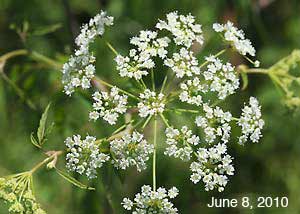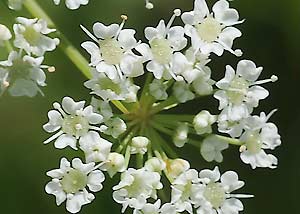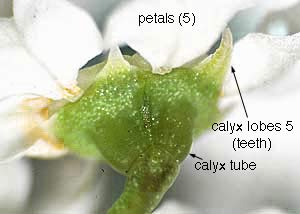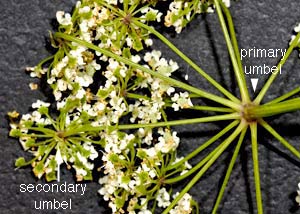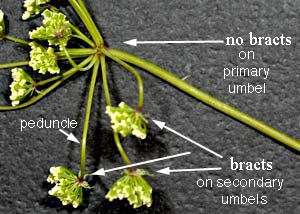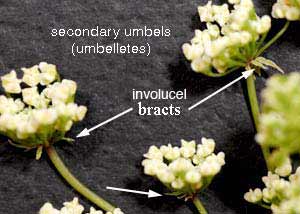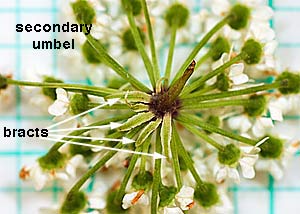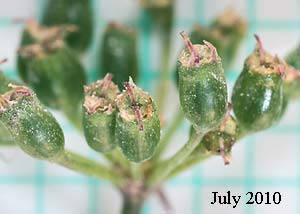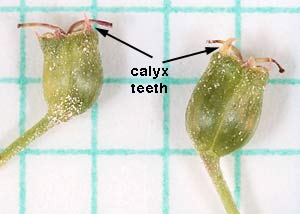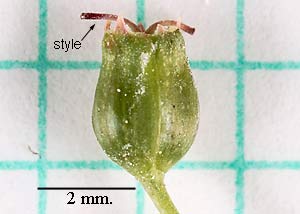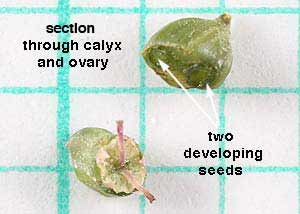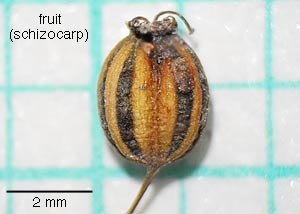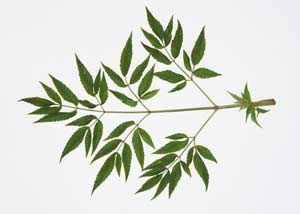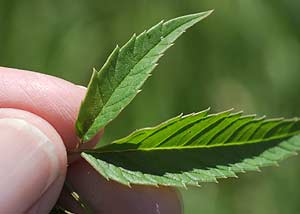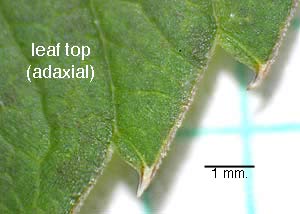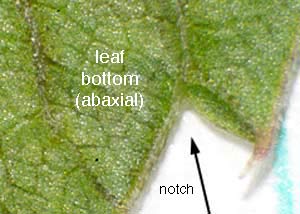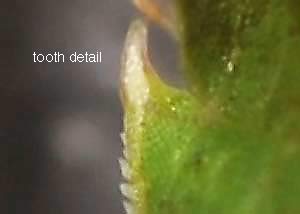
Cicuta maculata
| Classification Hierarchy | |
| Kingdom | Plantae |
| Subkingdom | Tracheophyta |
| Superdivision | Spermatophyta |
| Division | Magnoliophyta |
| Class | Magnoliopsida |
| Subclass | Rosidae |
| Order | Apiales |
| Family | Apiaceae |
| Genus | Cicuta |
| Species | Cicuta maculata |

Scientific Name:
Cicuta maculata [cicuta (Lat.) hemlock; maculata (Lat.) spotted or mottled]
Common Name: spotted water hemlock
Origin: Native
Habitat: Wet areas, open marshes, prairie wetlands, roadside ditches—sometimes associated with cattails.
Notes: Very
toxic, the ingestion of even small amounts are lethal to livestock and humans. The toxin, cicutoxin, (1), (2), is most concentrated in the
chambered roots.
Additional references:
1,
2,
3,
4,
5,
6,
7,
8
9.
Field Marks for Identification:
Flowers: small (4 mm.diam.), 5 white petals, in compound umbels, two-chambered fruits mature into two, single-seed fruits, calyx teeth obvious.
Leaves: alternate, compound, 2-3 pinnate.
leaflets: narrowly lanceolate.
margins: toothed.
veins: seem to end in the notch between teeth— on closer inspection they branch at the notch and continue to the teeth.
Stems: smooth, hollow, green or purple, when green often with purple streaks or blotches, frequently purple at leaf nodes.
Glossary:
Botanical Terms
